The major index ETFs continue to trade within narrow ranges. SPY has been stuck between 154 and 156 the last two weeks and QQQ has bounced between 67.5 and 68.8 since the gap on March 5th. After edging higher on Wednesday, stocks gave it back on Thursday and edged lower. All sectors were down with technology, finance, industrials and materials falling over 1%. Weakness in Oracle weighed on the tech sector. Housing stocks, which led the market higher on Wednesday, led the market lower on Thursday. Easy come, easy go. The Home Construction iShares (ITB) opened strong and then closed weak to form a bearish engulfing. Note, however, that the flag breakout is still holding and the 24 area becomes first support.
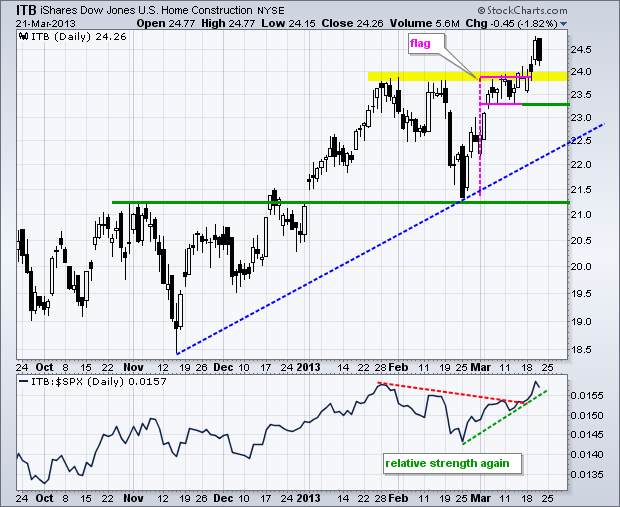

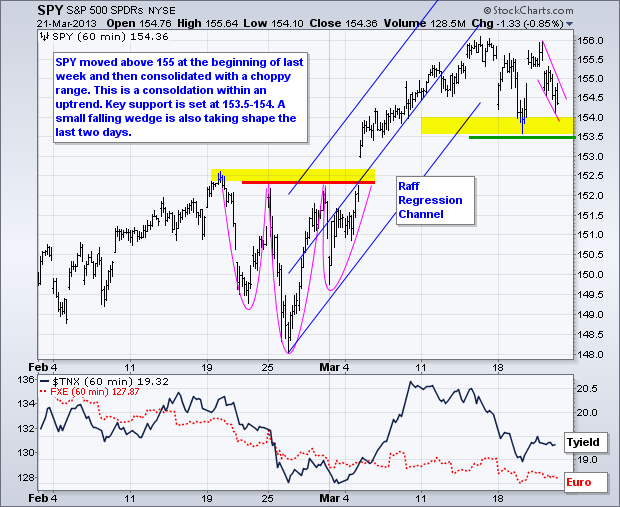
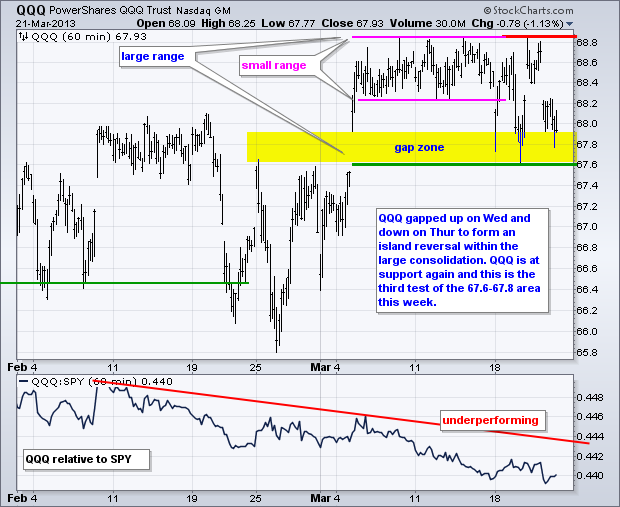
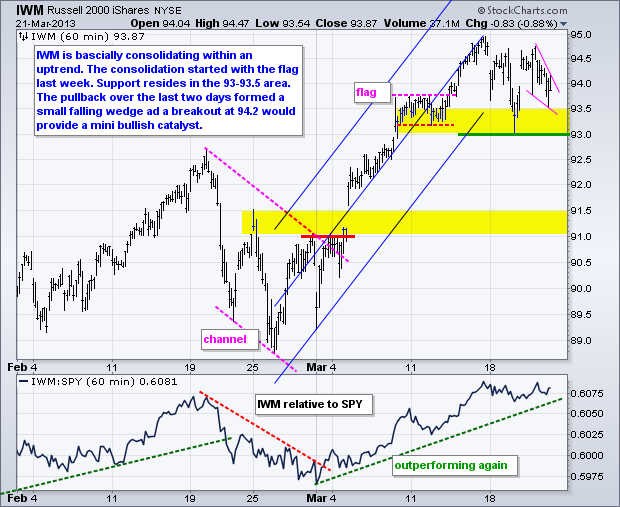
**************************************************************************
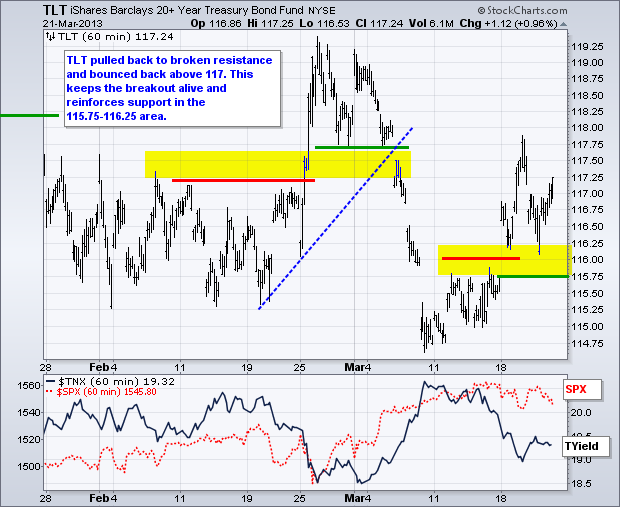
**************************************************************************
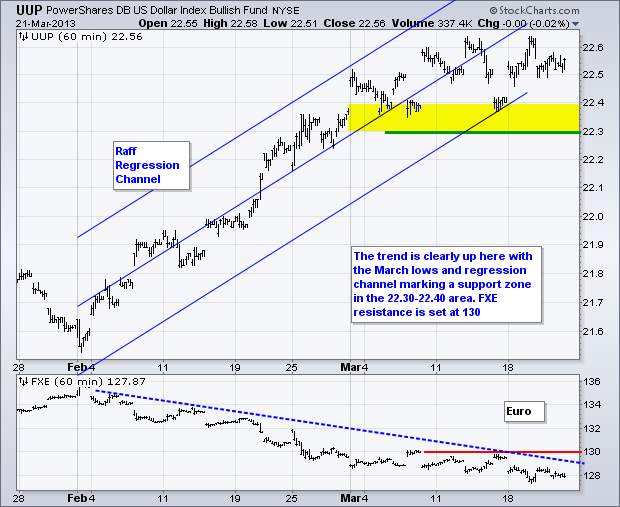
**************************************************************************

**************************************************************************
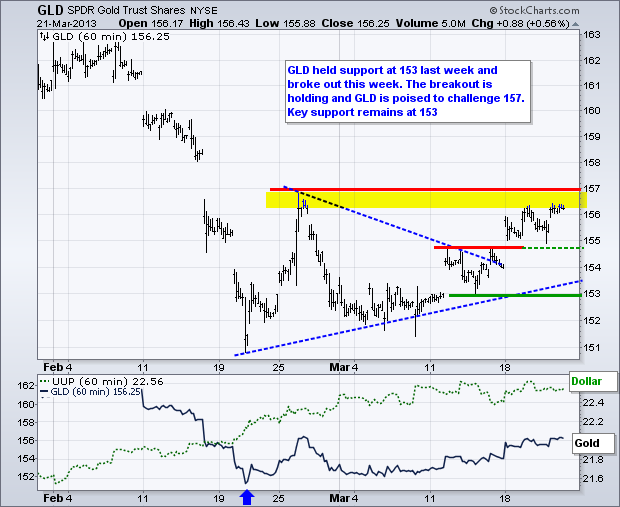
**************************************************************************
Key Reports and Events (all times Eastern):
Fri - Mar 22 - 17:00 - TGIF
Wed – Mar 27 - 23:59 – US Government Shut Down Deadline
Wed – May 15 - 23:59 – US Debt Ceiling Deadline
Charts of Interest: Tuesday and Thursday
This commentary and charts-of-interest are designed to stimulate thinking. This analysis is
not a recommendation to buy, sell, hold or sell short any security (stock ETF or otherwise).
We all need to think for ourselves when it comes to trading our own accounts. First, it is
the only way to really learn. Second, we are the only ones responsible for our decisions.
Think of these charts as food for further analysis. Before making a trade, it is important
to have a plan. Plan the trade and trade the plan. Among other things, this includes setting
a trigger level, a target area and a stop-loss level. It is also important to plan for three
possible price movements: advance, decline or sideways. Have a plan for all three scenarios
BEFORE making the trade. Consider possible holding times. And finally, look at overall market
conditions and sector/industry performance.

About the author:
Arthur Hill, CMT, is the Chief Technical Strategist at TrendInvestorPro.com. Focusing predominantly on US equities and ETFs, his systematic approach of identifying trend, finding signals within the trend, and setting key price levels has made him an esteemed market technician. Arthur has written articles for numerous financial publications including Barrons and Stocks & Commodities Magazine. In addition to his Chartered Market Technician (CMT) designation, he holds an MBA from the Cass Business School at City University in London.
Learn More





